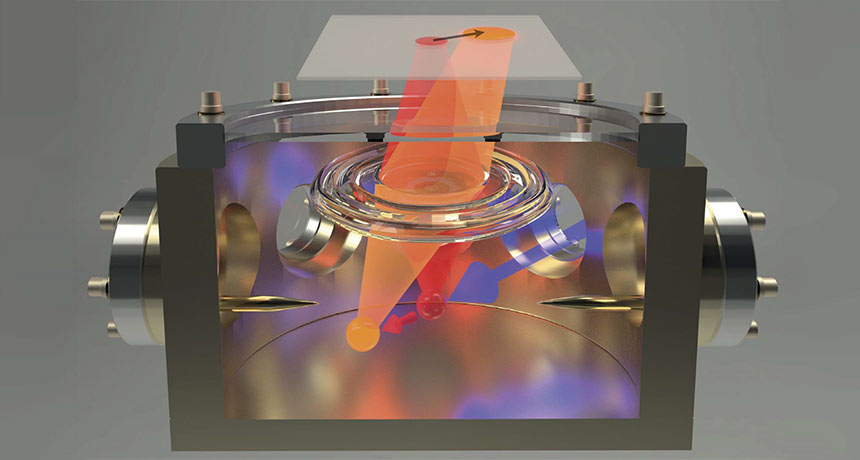A single atom can gauge teensy electromagnetic forces

Zeptonewton
ZEP-toe-new-ton n.
A unit of force equal to one billionth of a trillionth of a newton.
An itty-bitty object can be used to suss out teeny-weeny forces.
Scientists used an atom of the element ytterbium to sense an electromagnetic force smaller than 100 zeptonewtons, researchers report online March 23 in Science Advances. That’s less than 0.0000000000000000001 newtons — with, count ‘em, 18 zeroes after the decimal. At about the same strength as the gravitational pull between a person in Dallas and another in Washington, D.C., that’s downright feeble.
After removing one of the atom’s electrons, researchers trapped the atom using electric fields and cooled it to less than a thousandth of a degree above absolute zero (–273.15° Celsius) by hitting it with laser light. That light, counterintuitively, can cause an atom to chill out. The laser also makes the atom glow, and scientists focused that light into an image with a miniature Fresnel lens, a segmented lens like those used to focus lighthouse beams.
Monitoring the motion of the atom’s image allowed the researchers to study how the atom responded to electric fields, and to measure the minuscule force caused by particles of light scattering off the atom, a measly 95 zeptonewtons.